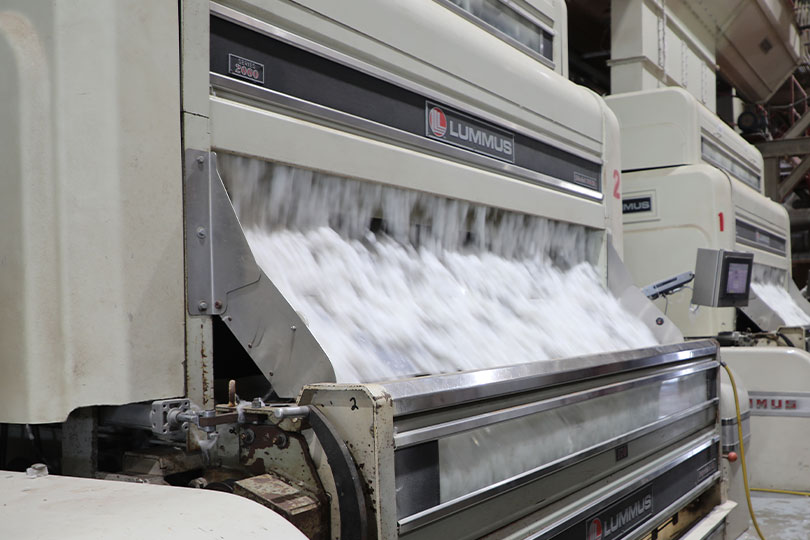By Emmy Powell
Communications Specialist
Students in kindergarten through fifth grade learned about cotton in September through Texas Farm Bureau’s (TFB) Farm From School program.
The monthly virtual session was held with Clay Whitley, gin manager of United Ag Co-op in El Campo.
“This session was a great way for students to see agriculture in action,” said Carson Read, TFB education coordinator. “They learned about cotton and the ginning process and how this fiber from Texas farms ends up in our clothes and other unexpected products. Farm From School is all about giving students hands-on experiences that connect them to the agriculture behind everyday life.”
During the 30-minute virtual session, Whitley walked students through each step of the ginning process—receiving cotton bales from local farmers, separating the lint and trash and pressing the cotton back into a bale to get classed and sold.
“We start with the cotton in hay bales,” Whitley said. “We cut off the plastic wraps that help preserve the fibers. It then moves through pre-cleaning. Once it goes down the conveyor, it gets sucked up into the gin where we have to dry it and clean it.”
Whitley noted there are about 250 gins in Texas. United Ag Co-op in El Campo serves farmers within an 80-mile radius.
With cotton coming from different farms, some bales are wet, and others are dry, so they must monitor the moisture and adapt to changing conditions. He then showed the students a burner that helps dry the cotton.
“The cleaner is similar to an old timey washboard,” he said. “There are big, spiked cylinders that drag the cotton across the concave bar to clean it. We run it through several cleaners. All the trash falls out, and then it is cleaned again.”
After the second wash, it goes into an auger that distributes the cotton into gin stands.
“At United Ag, we have six gin stands, where we can process anywhere from 900 to 1,000 bales in 12 hours,” Whitley said.
A bale is about 500 pounds of finished lint.
Cotton gins are still modeled after Eli Whitney’s invention to separate the seed from the fiber.
Once the fiber, seed and cotton gin trash, which is the excess leaves and sticks, are separated, the fibers go into a tramper, press box and strapper.
“A tramper packs cotton into one side of the boxes. As they pack the cotton, they spin, press and finish the bale,” he said.
Each bale comes out with a sample that receives an identification and a barcode that is sent to a U.S. Department of Agriculture classing warehouse for marketing the cotton.
The crop has many uses, Whitley said, including making dollar bills, feeding cattle, oil for cooking and compost.
“This year, we’re collecting all the trash from the whole gin, and we’re running it through several stages of cleaning to capture every bit of lint that we produce for moats,” he said. “This is used in cotton swabs, cotton balls, makeup products. Moats typically have a shorter fiber.”
More information about Farm From School
The fall 2025 program will continue through December.
The remaining sessions for kindergarten through fifth grade will focus on apples, dairy goats and spinach.
Click here for more information about the Farm From School program.
Visit texasfarmbureau.org/aitc for more information and the latest announcements on TFB’s Ag in the Classroom activities.


Leave A Comment